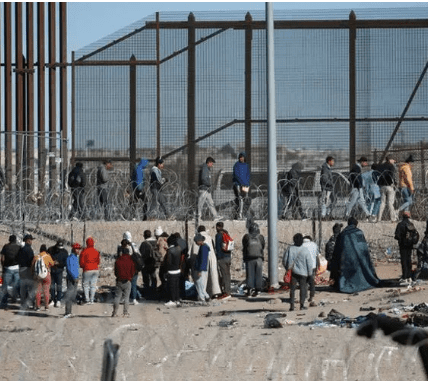The conflict between Israel and Gaza has reached new levels of intensity in 2024, as recent military actions and protests have heightened the already volatile situation. As of September 8, 2024, Israeli airstrikes have killed at least 31 people in Gaza, while in Israel, an estimated 750,000 people took to the streets to protest the ongoing violence. The crisis is unfolding against a backdrop of political tensions, historical grievances, and humanitarian concerns that continue to complicate the region’s prospects for peace.
Recent Developments in the Israel-Gaza Conflict
Israeli Airstrikes in Gaza
On September 8, 2024, Israel launched a series of airstrikes targeting Hamas-controlled areas in the Gaza Strip. These strikes have resulted in the deaths of at least 31 Palestinians, including women and children, according to reports from local health officials. The Israeli government has stated that the airstrikes were in response to rocket fire from Gaza aimed at civilian areas in southern Israel. Hamas, the governing authority in Gaza, claimed responsibility for the rocket attacks, asserting that they were retaliating against Israeli military actions in the West Bank and Jerusalem.
The scale and intensity of the airstrikes have raised concerns about further civilian casualties in Gaza, where densely populated urban areas make it difficult to avoid harm to non-combatants. The Gaza Strip, home to approximately 2 million people, has long been subjected to economic blockades and severe infrastructure limitations, which exacerbate the humanitarian crisis during times of conflict. Hospitals in Gaza are reportedly struggling to cope with the influx of injured civilians, and access to basic necessities like food, water, and electricity has been further disrupted.
Protests in Israel
While the violence in Gaza rages on, a massive wave of protests has erupted across Israel. On September 8, 2024, an estimated 750,000 Israelis took to the streets to voice their opposition to the Israeli government’s handling of the conflict. The protests, some of the largest in Israeli history, were sparked by frustrations with Prime Minister Benjamin Netanyahu’s administration and its hardline stance on Gaza and the West Bank.
Many Israelis are calling for a ceasefire and a diplomatic resolution to the conflict, emphasizing the toll that the ongoing war has taken on both Israeli and Palestinian civilians. Critics of Netanyahu’s government argue that the continued military operations in Gaza and the expansion of Israeli settlements in the West Bank are undermining prospects for peace and fueling the cycle of violence.
Among the protestors are a diverse array of groups, including left-wing activists, members of the Arab-Israeli community, and even some veterans of the Israeli military who oppose the government’s current policies. Despite the overwhelming turnout, Netanyahu has shown no signs of backing down, maintaining that Israel’s military actions are necessary for the nation’s security.
The Humanitarian Impact on Gaza
A Region in Crisis
The Gaza Strip has long been one of the most densely populated and economically challenged areas in the world. The region has faced years of economic blockades imposed by Israel and Egypt, limiting access to essential goods and services. This situation has been compounded by frequent outbreaks of violence between Israeli forces and Hamas, the militant group that controls Gaza. Civilians, particularly children, are often the ones most affected by the violence.
In the latest wave of conflict, the humanitarian situation in Gaza has worsened significantly. The United Nations and other humanitarian organizations have reported severe shortages of medical supplies, food, clean water, and fuel. Hospitals are overwhelmed by the influx of injured people, many of whom are civilians caught in the crossfire. The destruction of homes, schools, and hospitals due to Israeli airstrikes has displaced thousands of people, with many seeking shelter in makeshift camps that lack basic amenities.
Efforts by international humanitarian organizations to provide aid have been hampered by the ongoing fighting, with routes for delivering supplies often blocked or delayed. This has sparked concerns that the death toll could continue to rise, especially as medical facilities struggle to function without adequate electricity and water.
Read more : Apple’s iPhone 16: A New Era in Artificial Intelligence
Civilians Caught in the Crossfire
Civilians on both sides of the conflict are paying a heavy price. In Gaza, entire families have been killed or injured in airstrikes, while in southern Israel, civilians have been forced to take shelter from the rocket fire coming from Gaza. According to the International Red Cross, both Israel and Hamas are failing to take the necessary precautions to protect civilians during military operations, violating international humanitarian law.
The psychological toll of the conflict cannot be understated. In Gaza, children grow up under the constant threat of bombings and displacement, while in Israel, families live in fear of rocket attacks. Both populations are left to deal with the long-term effects of trauma, creating a generational cycle of fear and resentment that makes peace even more elusive.
The International Response
Global Reactions to the Conflict
The international community has been deeply divided over the Israel-Gaza conflict. While some countries, particularly the United States, continue to support Israel’s right to defend itself against rocket attacks, others have criticized the disproportionate use of force by the Israeli military. The European Union, several Arab countries, and human rights organizations have called for an immediate ceasefire and a return to diplomatic negotiations.
The UN Security Council has held emergency meetings to address the crisis, though efforts to pass a resolution have been blocked by conflicting interests among member states. Russia and China have pushed for more stringent measures against Israel, while the U.S. has used its veto power to shield Israel from international sanctions.
Amidst the diplomatic deadlock, various NGOs and humanitarian groups are calling for immediate action to prevent further loss of life. Appeals for emergency funding to support relief efforts in Gaza have been launched, but many aid organizations are struggling to operate in the region due to the severity of the conflict.
Role of Neighboring Countries
Israel’s neighboring countries, particularly Egypt and Jordan, have also played critical roles in the ongoing conflict. Egypt, which shares a border with Gaza, has been a key mediator in previous ceasefire negotiations and is reportedly working behind the scenes to broker a truce. However, Egypt has also kept its Rafah border crossing with Gaza tightly controlled, limiting the flow of goods and people in and out of the region. This has contributed to the humanitarian crisis in Gaza, even as Egypt’s government insists that its restrictions are necessary for security reasons.
Jordan, another key player in Middle Eastern politics, has condemned the Israeli airstrikes and called for an end to the violence. Both Egypt and Jordan have peace agreements with Israel but face immense domestic pressure to take a firmer stance against Israeli military actions in Gaza.
A Long Road to Peace
The Challenges of a Lasting Solution
The current flare-up of violence between Israel and Gaza is just the latest chapter in a conflict that has lasted for decades. At the heart of the issue are deep-seated political, religious, and territorial disputes that have defied resolution. The two-state solution, which envisions an independent Palestinian state alongside Israel, has long been considered the most viable pathway to peace. However, ongoing Israeli settlement expansion in the West Bank, along with internal divisions among Palestinian factions, has stalled progress toward such a solution.
Moreover, both Israeli and Palestinian leaderships are facing increasing domestic pressures. In Israel, Netanyahu’s hardline policies have deepened divisions within the country, while in Gaza, Hamas remains firmly in control, with little interest in negotiating with Israel. The Palestinian Authority, based in the West Bank, lacks control over Gaza, further complicating efforts to present a united front in peace talks.
Conclusion: A Call for Diplomacy
As the conflict continues, the need for diplomatic intervention becomes more urgent. While both sides maintain their positions, it is clear that continued military action will only lead to more loss of life, displacement, and suffering for civilians. The international community must play a more active role in mediating peace talks and addressing the humanitarian crisis in Gaza.
Without a concerted effort to address the root causes of the conflict, including the Israeli occupation of Palestinian territories, the blockade of Gaza, and the cycles of violence perpetuated by both Hamas and Israel, true peace will remain out of reach. The coming days and weeks will be critical in determining whether diplomacy can prevail over violence.





